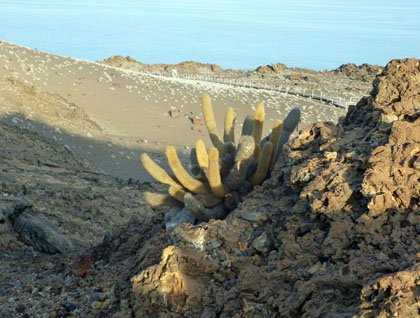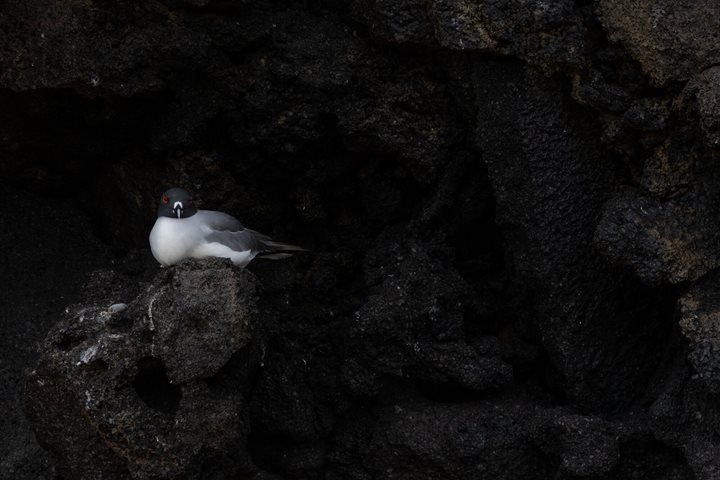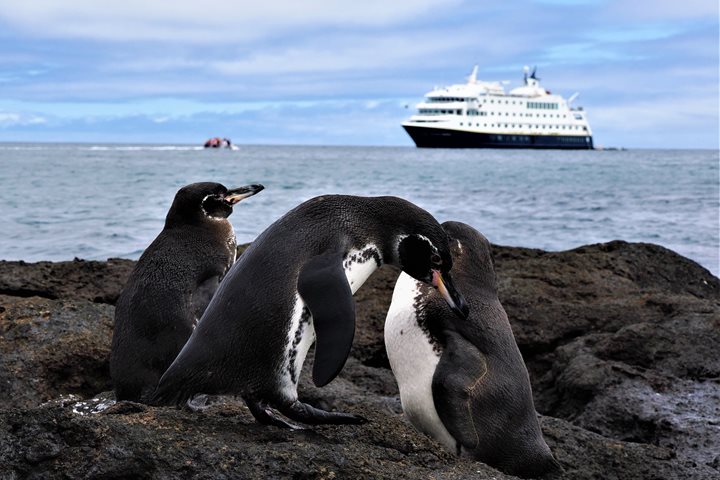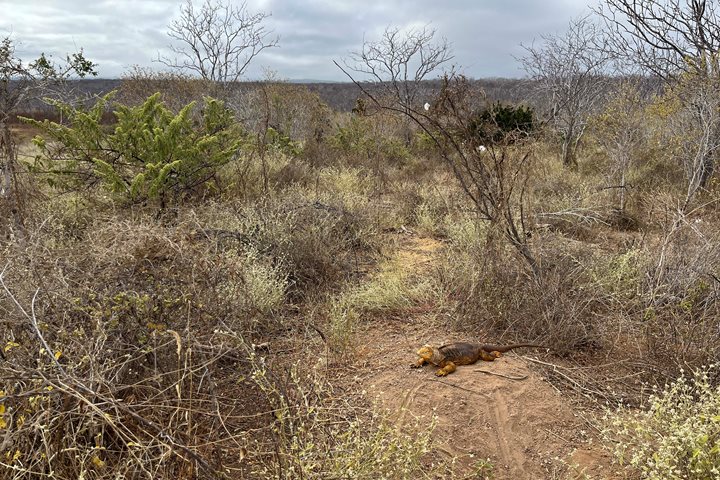We started out with an early morning pre-breakfast outing. Stairs built by the park service took us up the summit of a volcano, and as we climbed we had the opportunity to talk about the interesting lava formations that have made this the youngest island of the archipelago. Understanding the processes occurring here helped us understand how life on earth has actually taken place, and this point in particular is what makes this young archipelago such an interesting place. As we reached the highest point, the surrounding islands observed on the distance were easily identified - even Marchena, at the most northern tip of the archipelago, could be seen in the distance.
A mid-morning snorkel gave us all a unique chance to explore the underwater world of Bartolome. The waters around Pinnacle Rock are full of interesting life. Water temperatures have decreased during this time of the year, and life here was plentiful since cooler waters have more productivity. Galapagos sea lions, Galapagos penguins, and sharks were spotted swimming and sleeping on the sandy bottom. A wide variety of tropical fish where chasing each other and feeding, making it very interesting for us, and just when we were getting ready to board the Zodiac to go back on board a very fast swimming little penguin got between our feet busy chasing a sardine that was playing hard to get!
As the National Geographic Endeavour navigated to anchor close to Chinese Hat in the afternoon, a few Galapagos penguins were seen on the young lava flows on the coast of Santiago Island. Some white-tipped reef sharks and marine iguanas under the water surprised us on the second snorkel adventure of the day.
At the end of the day, as we returned to the ship at sunset, we understood that pristine places like this, where life has just began to take place, need to be conserved in time. Not for ourselves that are just visitors, but for the interesting and tame creatures that inhabit the place and well deserve to have a chance.







